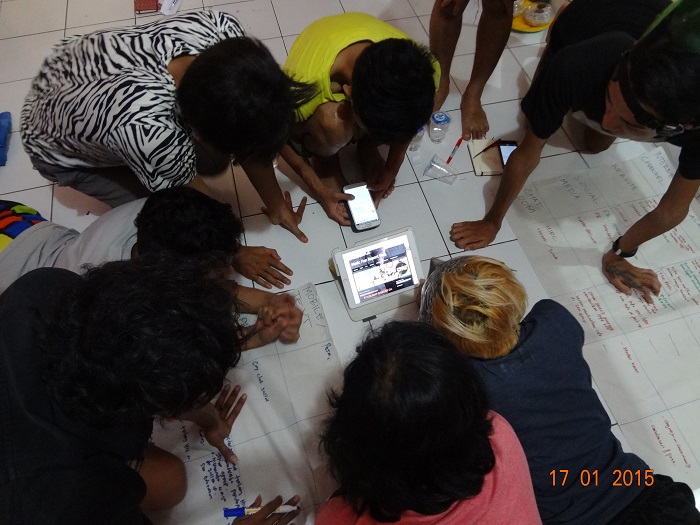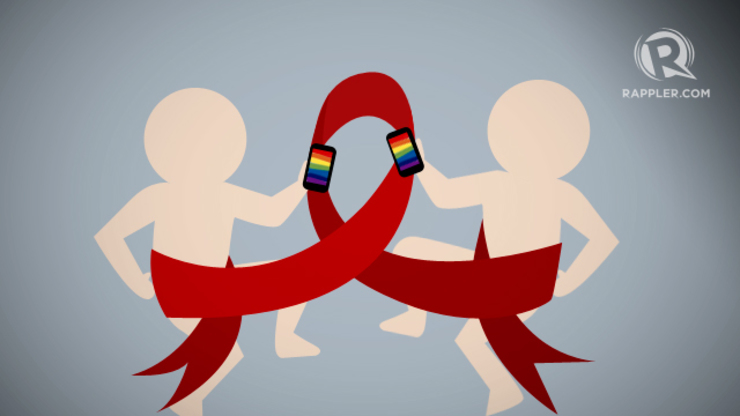Versi Bh. Indonesia
Dinar Lubis, Sari Andajani and Cath Conn
The free condoms provided by HIV prevention organisations in Bali are unpopular among young men as they are lower quality than commercially available condoms. People make jokes about them and the people who use them. This is one of a variety of problems in the delivery of HIV prevention services to at-risk groups in Bali.
The HIV epidemic remains a major public health problem in Indonesia. Identified by the Joint United Nations Programme on HIV/AIDS as the fastest growing epidemic in the Asia Pacific region, there were 630,000 people estimated to be living with HIV in Indonesia in 2017. HIV prevalence in the general population is still low at 0.5 per cent. However, the 2015 Indonesia Integrated Biology and Behaviour Survey reported that HIV prevalence among high-risk populations is of concern: for female sex workers it is 8 per cent, among waria (transgender women) it is 25 per cent, for men who have sex with men (MSM) it is 25 per cent, and for intravenous drug users it is 28 per cent.
Unfortunately, data on the prevalence of HIV among particular age groups of MSM is not available, but prevalence among young MSM is likely to be equal or higher than among older MSM. Young people, including young MSM, are vulnerable to HIV because they are socially and sexually more mobile than older people, they are more likely to be marginalised by society, family and friends, and they may be reluctant to access services. Recently, the Indonesian media portrayed MSM as an affront to Indonesian traditional values and religious teaching. Indeed, there are 22 regions in Indonesia that impose a local regulation that aims to limit homosexual and transgender behaviours, labelling them a social illness. The Indonesian government has also banned gay emojis, and it prevents transgender individuals and allied communities from participating in TV programmes. Further the government censor what it believes to be gay-related websites and gay apps such as Grindr, Hornet and Tumblr. This situation reinforces existing social stigma against LGBTQ communities and seriously hinders efforts to end HIV by 2030.
The lacklustre picture of HIV prevention
If Indonesia is serious about preventing the spread of HIV amongst young MSM (YMSM) there is a need for an approach which both resonates with YMSM and tackles the burden of stigma and disapproval imposed by society. Currently, HIV prevention is lacklustre and unattractive and makes little connection with the lifestyle and interests of YMSM. Budi (pseudonym), an NGO worker in Bali, describes it as follows: ‘Currently, the HIV prevention programme for young gay men is boring and not attractive, leading to low practice of HIV prevention.’ There are the low quality condoms that HIV prevention organisations in Bali hand out, which YMSM make jokes about and are not keen to use. Another weak point is the distribution of HIV prevention campaigns on printed flyers in gay bars near tourist spots. Reza, a HIV prevention volunteer says that people ignore the flyers and that distributing them during busy times in bars is a poor strategy.

So, the method used to spread information to YMSM is outdated. It also relies on older peer educators reaching out to YMSM, where the age gap is seen as a barrier. ‘The peer educators are seen as not relevant or engaging to many YMSM, who are unlikely to talk to any social worker who is older than themselves,’ said Budi. A number of YMSM, such as Komang, one of the NGO workers, argued for having inclusive, safe, informative, attractive and up-to-day gay apps which could be used to convey key information on HIV prevention.
Interactive online HIV prevention
Given the limitations of HIV prevention for YMSM in Bali, what can be done? Online health promotion communications and advocacy, including for HIV prevention, is growing fast. The internet can be a powerful tool as it allows messaging to a larger group of people, customised messaging and interaction between users and providers in the form of chat spaces and interactive projects. Online HIV prevention has similar potential in Bali given that many of the YMSM are indeed digital natives. But just because the information is on the internet does not mean that it is appealing. For instance, Made and Doni, two YMSM commented, ‘the website is never improved – just the same information on repeat. [It is] is outdated and unattractive.’ They note that not many of their friends seek information about HIV prevention online.

Meaningful participation by YMSM could assist in the design of appropriate online HIV prevention. Another advantage of online approaches in the context of Indonesia is that it is a relatively safe communication portal which could protect people’s privacy, especially when discussing matters which are highly stigmatised like sexuality and HIV prevention. However, an environment of stigma and risk still poses a challenge when developing and navigating online HIV prevention.
A group of nine YMSM came together recently to undertake participatory action research as a means of advancing their ideas for HIV prevention, including use of the internet. They critiqued the existing HIV prevention system and found that they instead needed customised mechanisms. These need to be ‘so us; something which shows our identity and who we are’, said Komang and Made, two of the nine YMSM. The ‘So Us’ idea is about having fun, being creative, socialising and being up-to-date and on trend. These are all attributes that are important to YMSM. This group suggested that such a campaign could be shared through blogs, other websites, social media or chat rooms. Messages or activities could include HIV prevention, counselling and testing, safe sex information and updated news on the YMSM communities. The group also mentioned that a portal could be a medium for inviting new YMSM to join a space where they can safely share stories, connect and enjoy a virtual ‘meet and greet’ with other members. The key to any new online initiative is to connect with YMSM in a way that works for them.
So far, the group has reflected on the use of the internet and their roles as agents of change to make HIV prevention relevant to more YMSM. They found the experience of participating in this endeavour rewarding and exciting, allowing for collective and empowering expression, with each member being valued as an expert. The stories and knowledge shared among members were enlightening and resulted in valuable relationship building.
This is early days for such approaches in Bali, and Indonesia more widely, and these ideas need to be developed against a background of ensuring safety and privacy for YMSM. In many parts of the world online tools for HIV prevention are not as constrained as they have become in Indonesia, but there are also many other countries where YMSM similarly face stigma and could benefit from progress being made in Bali. Across Indonesia, it would be valuable to pursue this approach to HIV prevention in a cautious way, taking the increasingly homophobic context into consideration.
Dinar Lubis (goarhudinar@yahoo.com, @Dinar_lubis38) is based at the School of Public Health in the Department of Public Health and Preventive Medicine, Faculty of Medicine, Udayana University, Bali. Sari Andajani (sari.andajani@aut.ac.nz) is based at the School of Public Health and Psychosocial Studies, Auckland University of Technology. Cath Conn (cath.conn@aut.ac.nz) is based at the School of Public Health and Psychosocial Studies, Auckland University of Technology.
